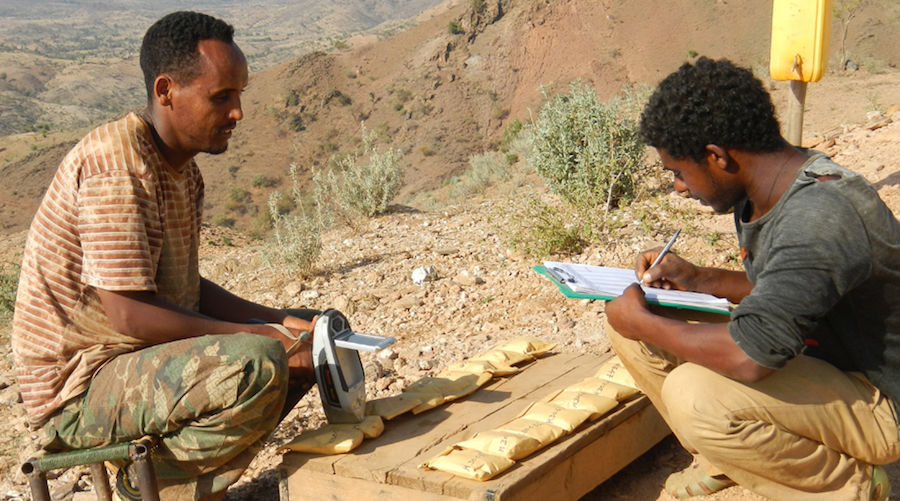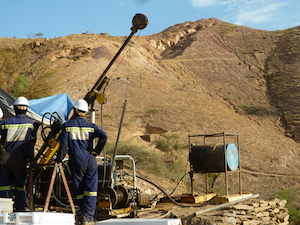
Vancouver-based East Africa Metals (TSX-V:EAM) submitted two mining licence applications for the company’s Da Tambuk and Mato Bula Gold deposits at its 100% owned Adyabo Project, located in the Tigray National Regional State, 600 kilometres north of the Ethiopian capital Addis Ababa.
In a press release, East Africa’s CEO, Andrew Lee Smith, said that following the Ethiopian government’s recent approval of the mining licence for the nearby Terakimti Oxide Gold Project, the company realized that holding two additional deposits within a 20-kilometre footprint in an area of well-developed air, road, and power infrastructure offered “exceptional potential for project development.”
Mineral resources at Da Tambuk have been defined as 775,000 tonnes at 4.51 grams per tonne gold and 2.4 grams per tonne silver, containing 112,000 ounces of gold and 59,000 ounces of silver, to a drilled depth of 200 metres. Mineralization occurs in two sub-parallel zones with a strike length of 650 metres in a northeast-southwest direction, a vertical extent of 200 metres and horizontal widths up to 50 metres.

Photo by East Africa Metals.
Mato Bula, on the other hand, shows 2,280,000 tonnes grading 3.74 grams per tonne gold, 0.28% copper and 1.1 gram per tonne silver, containing 278,000 ounces of gold, 14 million pounds copper and 70,000 ounces of silver, to a drilled depth of 450 metres. Similar to Da Tambuk, the mineralized zone is open along strike and to depth and mineralization occurs in three sub-parallel zones with a strike length of 850 metres in a northeast-southwest direction, a vertical extent of up to 450 metres and a horizontal width of up to 80 metres. The southern part of Mato Bula, the company says, has a higher copper content relative to gold. The overall Au:Cu ratio is 8.1 to 1.
According to East Africa, metallurgical test work conducted on samples from Da Tambuk indicated that the gold in the composite sample is not refractory and responds well to industry standard agitated cyanide leaching technology. “Based on these results, it is envisioned that conventional crushing and grinding followed by Carbon in Leach or Carbon in Pulp and carbon adsorption-desorption would be the appropriate technology for precious metals recovery at Da Tambuk,” the miner’s statement reads.
In Mato Bulla, on the other hand, copper and gold recovery to flotation concentrate was 93% and 83% respectively with concentrate grades of 27% copper and 166 g/t gold. Additional gold recovery was achieved by agitated cyanide leaching of gold-bearing flotation products (pyrite concentrate and copper cleaner tailings). With a combination of flotation and leaching, the overall gold recovery was 89%. “Based on these test results it is envisioned that a process utilizing conventional crushing and grinding followed by flotation to produce a gold-rich copper concentrate, combined with agitated leaching of flotation products in a C.I.L or C.I.P. circuit, would be the appropriate technology for the recovery of gold and copper at Mato Bula,” the company explained.
In the communiqué, East Africa also assured that it already has a completed, independently performed Environmental and Socio Impact Assessment which concluded that the local population and the regional government supports its endeavours.